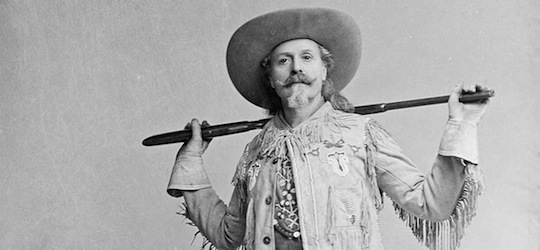Crucial to our understanding of the significance of the Great Plains to Cody’s personal experiences are the early years of Cody’s life, from his birth and early childhood in Iowa in the 1840s through the early 1850s, to his formative years in Kansas from 1852-1868, and his young adult period in Nebraska from 1868-1878. Events that occurred before he wrote his first autobiography and went on to achieve national fame and world-wide celebrity are eventually incorporated first into his stage shows and then into his grand Wild West exhibitions.
Great Plains themes, including stagecoaches, pony express riders, emigrant wagon trains, military evaluations and drills, famous generals that Cody served under, Indian attacks on emigrant camps, stagecoaches and trains, races, buffalo hunts, and Indian war dances were all presented in Cody’s Wild West shows. The transformation of the public conception of the Great Plains as a thrilling place of violence and action owes much to these performances. In fact, the centrality of the Great Plains to the “western” experience and the national story had a champion in Cody and his message was popular one that was widely received in the United States and Europe from 1872-1916. The digital history project, Buffalo Bill’s Great Plains, seeks to fill in the gaps in Cody’s biography where the paper trail ends by researching and interpreting similar experiences and activities in these specific places and times.
—–
“Buffalo Bill’s Great Plains, 1846-1879.” Paul A. Olson Seminars in Great Plains Studies, Center for Great Plains Studies, University of Nebraska, Lincoln, January 18, 2012. Douglas Seefeldt, University of Nebraska-Lincoln.
